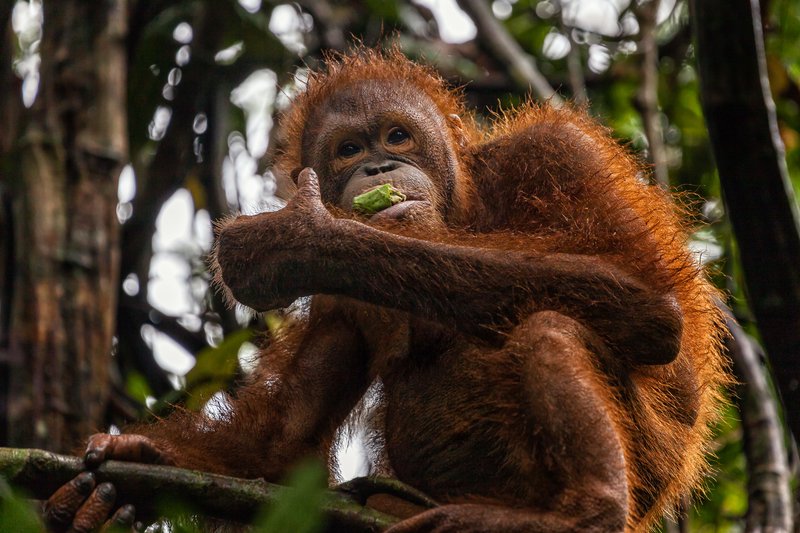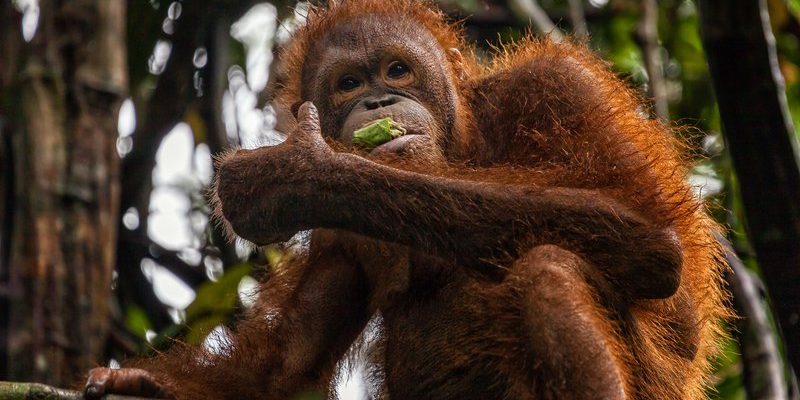
These amazing primates use their intelligence, physical skills, and social connections to thrive despite adversity. Just like we rely on our instincts and community for support, orangutans tap into their unique traits to find food, shelter, and safety. Let’s dive into the fascinating world of how orangutans not only survive but also flourish in harsh conditions, revealing some surprising strategies along the way.
Understanding Their Habitat
Orangutans primarily live in the rainforests of Borneo and Sumatra. These jungles are not just beautiful; they’re complex ecosystems filled with towering trees, vibrant plant life, and countless animal species. However, they’re also home to numerous challenges. For one, habitats can get damaged due to logging, agriculture, and climate change. When you think about it, it’s like having your home invaded by a neighbor who doesn’t respect your space.
In this ever-changing environment, orangutans have adapted to survive. They’re masters of the treetops, spending most of their lives among the branches. This habit not only keeps them safe from predators like tigers but also allows them to access their primary food source—fruit. It’s fascinating how they can make the tallest trees their dining tables, relying on their strong arms and long fingers to swing from one branch to another.
Diet and Foraging Techniques
You might wonder, what do orangutans eat? Their diet is mainly composed of fruit, especially those rich in nutrients like durian and figs. Here’s the thing: finding enough food in the rainforest can be tricky, especially when fruits don’t grow on every tree. So, orangutans have developed creative ways to forage.
They’ve learned to identify the signs of ripe fruit and can remember which trees bear fruit in different seasons. Their incredible memory plays a key role in their survival. Imagine having a favorite restaurant that only opens during certain months—knowing when to go is crucial! They also eat leaves, flowers, and insects when fruits are scarce. This flexibility in their diet helps them adapt to the unpredictable food availability in their habitats.
Tool Use in Foraging
Orangutans are also known for their remarkable intelligence, exhibiting behaviors like tool use while foraging. They’ve been observed using sticks to probe for termites or ants in tree bark. This is not just play; it’s a survival skill!
By employing tools, they can reach food that would otherwise be out of their grasp. Imagine trying to eat a delicious slice of cake that’s just out of reach—using a fork (or a stick) makes the impossible suddenly achievable! This ability to improvise and create tools reflects their advanced cognitive skills and is a testament to their adaptability in harsh environments.
Social Structure and Communication
Despite their solitary nature, orangutans are social animals. They use vocalizations, facial expressions, and body language to communicate with each other. This social structure plays a vital role in their survival. Young orangutans often stay with their mothers for up to eight years, learning crucial skills for life in the wild.
Orangutans maintain strong bonds, helping each other find food or protect against threats. Their communication can also include warning calls about nearby predators. It’s like having a friend who always has your back, ready to shout “watch out!” when danger approaches.
Adaptation to Climate Changes
With the threat of climate change looming over their habitats, orangutans face new challenges. Rising temperatures and changing rainfall patterns can affect fruit availability, forcing them to travel further for food. To cope with these changes, they’ve adapted their range and feeding habits.
These adaptations show how resilient orangutans can be. They’ll sometimes migrate to areas with better resource availability, even if it means leaving their accustomed areas. This adaptability is crucial, especially in an era when their homes are shrinking due to deforestation and human activity.
Challenges from Human Activity
Unfortunately, orangutans face significant threats from human activities. Deforestation for palm oil plantations, logging, and mining disrupt their habitats. It’s like having your favorite park replaced with a concrete jungle—suddenly, there’s no place to run, play, or find food.
As more trees are cut down, orangutans find themselves in increasingly harsh environments, struggling to survive. Conservation efforts are crucial to ensure these primates have a fighting chance. Initiatives that promote sustainable practices and protect their habitats can help them adapt and thrive despite the odds they face.
Conservation Efforts and Hope
You might be wondering: what can be done to help orangutans? Thankfully, there are many organizations working tirelessly to protect these extraordinary creatures. Conservation groups focus on habitat protection, rehabilitation of orphaned orangutans, and advocacy for sustainable practices.
By supporting these efforts, we can all play a part in preserving their way of life. Every bit helps! Many initiatives aim to educate local communities about the importance of orangutans and the ecosystems they inhabit. It’s a beautiful reminder that we can create a brighter future together.
The Resilience of Orangutans
At the end of the day, orangutans are a testament to resilience. They teach us that survival in harsh environments requires creativity, adaptability, and community. Just like in human life, overcoming obstacles often takes teamwork, resourcefulness, and a little ingenuity.
Orangutans show us how to navigate challenges with grace and strength. As they swing through the treetops, they remind us of the importance of protecting our planet and all its inhabitants. It’s a big world out there, and every creature plays a vital role in its balance.
Orangutans may face many struggles, but their survival skills are nothing short of remarkable. By learning more about them and supporting conservation, we can help ensure that these incredible animals continue to thrive in their natural habitats for generations to come.

